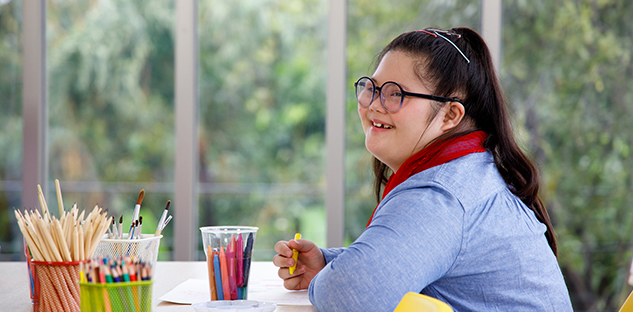
All-in Lesson Planning
By Geoff Heckman and Lani Browne | September 2022

After identifying your annual student outcome goals, find trusted colleagues with whom you can collaborate to build upon teaching strategies. By working together on lesson plan development, you can multiply your students’ learning gains. Collectively, we stretch more and attain more, and when we do, we lift one another to higher outcomes.
Discuss your student data with your team. After identifying gaps and needed areas of improvement, select specific ASCA Mindsets & Behaviors standards to address in the classroom or small group, all while paying particular attention to the verbs. Best practice leads us to closely attend to the verbs in the ASCA Mindsets & Behaviors and then to go deeper with what that verb or skill demands of the learner.
Start at the End
Let’s begin with the end in mind and take the verb “use” as an example. Given “use” as a standard, the student is being asked to have the skill to apply the behavior successfully with others. Are we asking students to show, identify, apply? We can really pin it down here.
Next, address your success criteria. Remember backward design? This is where it’s important to craft the success-criteria language so students know exactly how they’ll meet the targeted goal. In the ASCA lesson plan template, this is the “students will” section. For example, keeping with “use” and looking at behavior B-SS 1., use effective oral and written communication skills, the success criteria for the learning target might look like: “Students will explain to others in their class via FlipGrid at least three ways to use inclusive language.” Here the students know they’ll not only need to understand what inclusive language is, but they’ll also need to apply that new knowledge in an explanation composed of at least three parts, all through the engaging tech recording tool, FlipGrid.
Next, consider your instructional strategies, delivery vehicles (e.g., reading materials, artwork, music, video clips, podcasts) and academic language. All of this becomes the scaffolding to step students through their learning process. Perhaps you’ll have students read a selection from an article or short story focused on creating equity for marginalized populations and then process ideas as a group on what can be done at your school. Maybe they will take in music or art that reflects underrepresented cultures and uncover the story and how we share our narratives. They might listen to a podcast that exposes the struggle for inclusion, followed with a discussion of the vulnerability of sharing and how we can help others feel safe so change can happen.
Students have many ideas to make schools better. By eliminating the antiquated philosophy that the person at the front of the room is the keeper of all knowledge, we can present materials in a variety of ways to connect with student interests on a deeper level. Relevance is a buzzword in education for good reason. Because learning really is emotional, connection allows for greater understanding and application of your instruction.
Multiple Methods
Avoid the misconception that students should identify with one hard-wired cognition or learning style. The brain likes novelty and its plasticity of allows us to reach far beyond one set learning type. A variety of visual, auditory, kinesthetic and tactile modalities serves students best in classroom and small-group instruction. Our sample lesson plan imagines instructional delivery rich with relatable examples, writing, movement, dialogue and – with a bit of luck – some laughter.With the goal and methods in mind, next comes a focus on delivery. Will this be a whole-group conversation, will you break students into groups, or will it be a lecture where students listen and reflect? By focusing on multiple delivery forms and keeping students involved and engaged, you’ll increase the chances of a successful lesson. Knowing how you’ll deliver the lesson and the steps you’ll follow lets you walk into the classroom with a plan not only of what will take place, but how.
Being mindful demands that “what” and “how” connect with “why.” If students are conversing in pairs or taking notes on a presentation, how does this activity tie back into the learning goal? The ASCA lesson plan template leads us to reflect on how to interest students in the lesson.
For example, what is the hook? In our lesson, it could be the essential question: “Is it better to be careful with the language we use or speak freely with the first thing that comes to mind?” How will we wrap up, allowing students to reflect, but more important, to show, identify, apply – using the verb on which this lesson focused? Our imagined lesson might include a carousel walk, inviting students to collaboratively identify ideas extending back to the learning target, while playing an intentionally chosen song. Finally, how will we connect the lesson results back to the data that originally indicated the lesson was needed in the first place and show growth, change or a need to do more?
With plans connected to instruction, the most important foundation is, yes, relationships. To help our students build postsecondary readiness, we must address social/emotional development. Connection with our students in the social/emotional domain helps ensure that they connect with our instruction and succeed in their current academic setting and future planning.
Learners of any age want and need those connections, and the impact school counselors can have currently is unlike any other time in education.
Geoff Heckman is a school counselor and school counseling department head at Platte County High School in Platte City, Mo. Contact him at heckmang@platteco.k12.mo.us. Lani Browne is the instructional coach at Platte County High School.